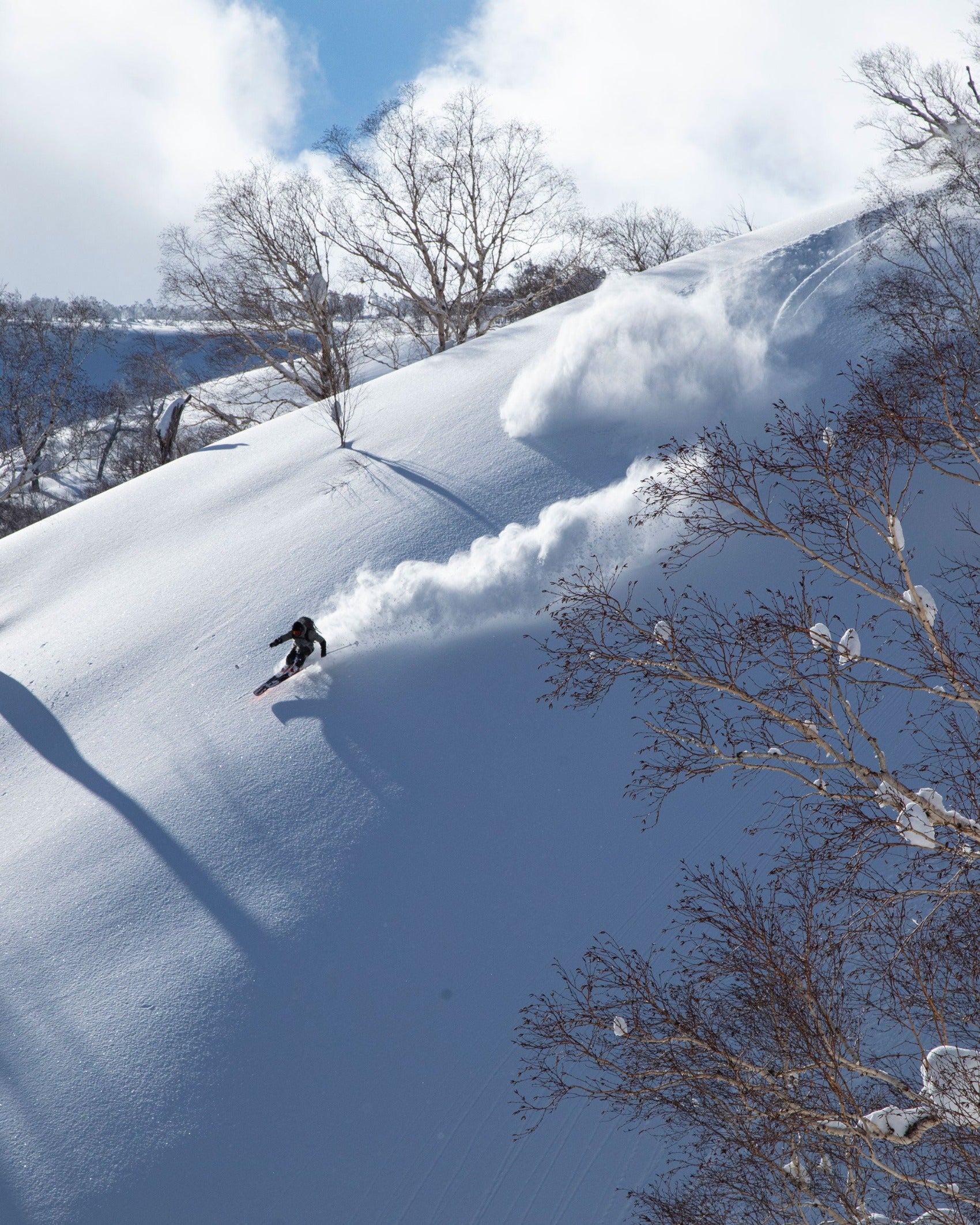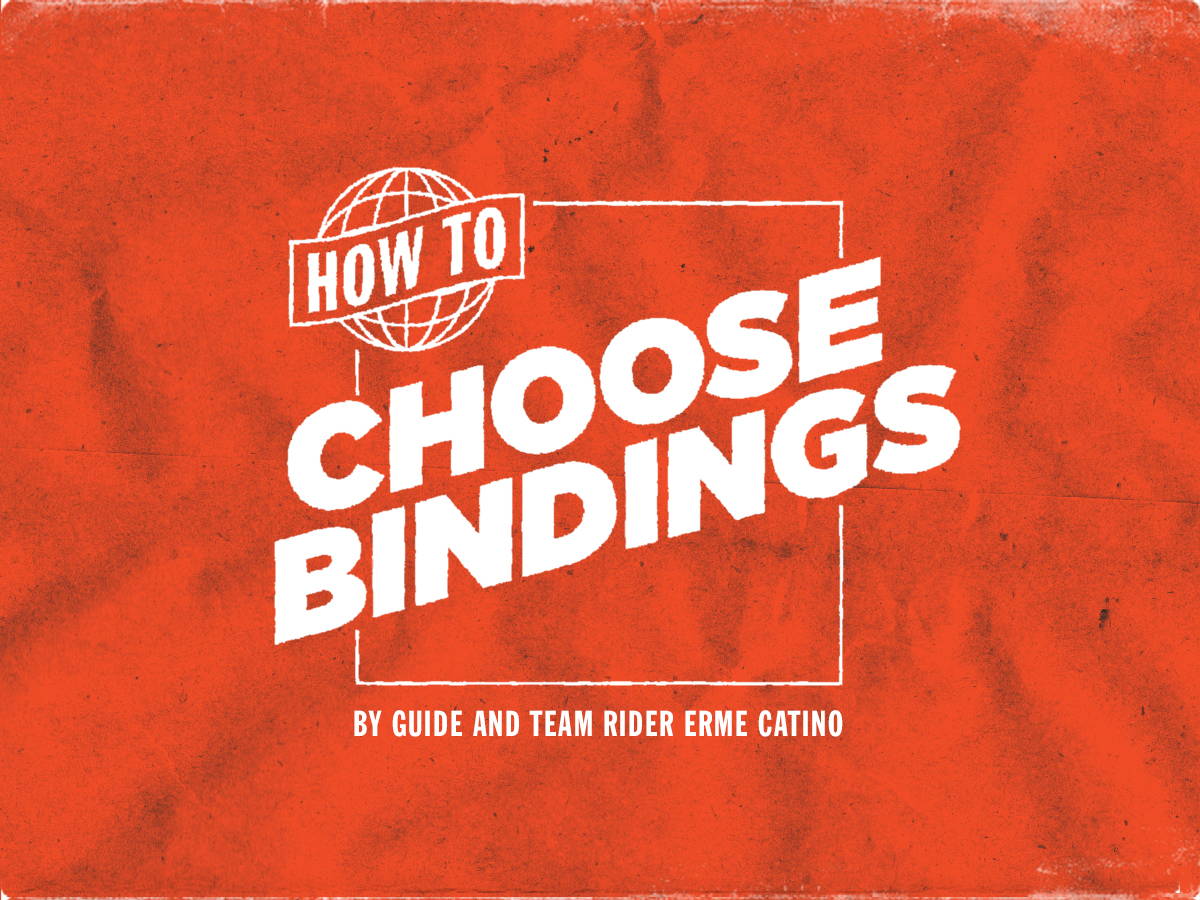How to choose the best ski bindings?
This is a question that undoubtedly comes up year after year; be it ski season or summer—since skiers are always scheming of their next set of planks. It’s an important question to ask, perhaps with more complexity than many skiers realize. Below we’ll review the best ski bindings for your style of skiing. We'll also break-down which bindings match up with their ideal 4FRNT Ski.
A ski binding must prevent unwanted pre-releases and offer reliable retention when skiing hard, as well as have the ability to release safely when you send-it and things don’t go as planned. However, to truly shine it needs to be matched for the demands of the day. For example, you aren’t going to put skinny road bike tires on your downhill mountain bike - it just doesn’t make sense. Think of choosing a ski binding as the where, when, and how of your upcoming ski season and particular ski.
Photo: Bryan Ralph
BACKCOUNTRY TOURING BINDINGS
ATK FREERAIDER 15 & ATK Raider 12
The ATK Freeraider 15 and ATK Raider 12 has everything a touring freerider needs for backcountry skiing. This Italian brand has been gaining popularity over the last few years and blurs the lines between lightweight pin bindings and trusted hyrbid chargers with higher and safer release values.
The weight and release values immediately catch many skier's attention, the low ramp angle, great connection to the ski with the toe piece make this binding perform a step above some other tech bindings on the market. For years backcountry skiers had to make do with tech bindings that had high ramp angles, dead spots in the ski flex, and a lack of connection when exiting turns. ATK has addressed all of those issues with their bindings.
Equipped with 12mm of elastic travel allows the ski to flex without worrying about the pins reaching their limit and pre-releasing - which also means they can handle big impacts from landing airs into powder. The magnetic heel risers are very simple to use and when combined with a weight of only 300 grams you have a very desirable weight with an incredibly easy to use interface.
Dynafit Rotation 10 & Rotation 14
Dynafit’s Rotation binding blend the fine balance of a pin-tech system with some elastic travel and release safety. They utilize 10mm of forward pressure in the heel, a rotational toe piece, and a TÜV certification for safety. It’s been a trustworthy standard for many while touring over the past four years and can handle all kinds of conditions—pillow lines, surfy powder, hardpack, and breakable crust.
While some folks lamented the earlier version of the rotational toe, the newer Rotation is lighter (at 605 grams), a bit tougher, and has an integrated system that keeps the binding centered before you click in the heel. However, that previous annoyance is easily avoided if you clear the pins when stepping in—something any tech binding skier should do regardless… Simply clear the snow off your boot, step in, lock the toe and swivel back and forth before stepping into the heel. Then unlock the toe and shred.
In short, this binding is tried and true, comes with a lifetime guarantee, and can handle anything and everything you could possibly throw at it while out in the backcountry.
PAIRS WELL WITH
Photo: Sam Watson
ALPINE BINDINGS - FREERIDE
Look Pivot 15 and Look Pivot 18
For freeskiers, the Look Pivot has been the top choice for years. Its ability to transfer power, absorb hits and bumps while at the same time mount on the ski with a shorter length footprint—allowing you to flex more of the ski—are just some of its best attributes.
The Pivot 15 and 18 provide bomber construction, with accessibility in its DIN range, and more color options to complement the brake widths. It’s also Grip Walk compatible, meaning you can legitimately run a hybrid boot in it without being worried about a pre-release—one of the reasons the Pivots are so great. Like all Look Pivots, the Pivot 15 has the turntable heel, which rotates directly under the tibia—reducing risk of a knee injury, and has 28mm of elastic travel—the highest in the industry. When combined with 45mm of lateral toe elasticity, seven points of contact that translate to incredible power transmission and snow feel, a 180-degree Multi-Directional Release, it’s no question that freeskiers have trusted it for so long.
PAIRS WELL WITH
Photo: Sam Watson
ALPINE BINDINGS - ALL MOUNTAIN
Tyrolia Attack 11 and Attack 14
The Tyrolia Attack² line of ski bindings have been creating a core following over recent years as well. The ski binding has a wide freeride inspired toe piece that transmits energy extremely well accompanied with a 77mm wide AFD, that can be adjusted to Alpine and GripWalk Boots.
The Attack ski binding has a low stand height and wide platform for fatter skis. It also utilizes a NX Freeride heel that has an easy yet secure step in, that is anchored in with metal heel tracks. When combined with their freeride toe piece it provides a binding that has excellent elastic travel and return to center for when you’re throttling it in either the park or down big mountain lines.
PAIRS WELL WITH
Binding Categories Explained
Alpine Bindings
If you’ve determined that you’re going to be skiing the resort and have chosen an Alpine Binding, it's important to know that bindings with higher DIN settings are aimed at more advanced and expert skiers.
Higher DIN Alpine Bindings are also burlier in their construction materials, built to handle higher impacts from moguls and jumps around the ski resort, and have more elastic travel like the Look Pivot 18. Elastic travel in ski bindings is incredibly important. It is the amount of distance a binding can move before the boot ejects from the system. The higher the elastic travel in a binding the more apt it is to handle deviations from center during demanding high force skiing.
Additionally, Alpine Bindings have more elastic travel than touring bindings which is why you see 4FRNT Team Riders, Thayne Rich or Jake Doan hitting massive backcountry jumps on all metal, high DIN alpine bindings and not Pin-Tech Alpine Touring Bindings.
Touring Bindings
Alpine Touring gear sales have been growing steadily over the years and given the wide range of options it can still be a confusing subject. Put simply, Alpine Touring or AT bindings allow the skier to have the option to lift their heel – utilizing heel risers to climb up ski slopes - while traveling in the backcountry. The genre of Alpine Touring bindings gets confusing when you dive into the subcategories. For the sake of simplicity, we’ve whittled it down to a couple bullet points.
Pin-Tech
Any binding similar to what began when Dynafit arrived upon the scene over 30 years ago. Pin-Tech bindings utilize a pin design in the toe and heel and can be burly like the Dynafit Rotation 14. Years ago, they were rigid and finnicky, but today many offer some elastic travel, high release values, and all metal constructions like the ATK Raider 12—providing amazing performance in the backcountry for both the uphill and the descent. And while you can technically ski them at the ski resort, they aren’t designed for that and will not have the same performance or safety of an Alpine or Hybrid AT Binding.
Hybrid AT Bindings
Hybrid AT Bindings: These can have a myriad of options, ranging from pin-tech designed toes with alpine looking heels or alpine bindings that transform with a few levers to allow for touring. They are beneficial in that you can have one binding for the resort and touring, but some are more skewed towards each end of the spectrum. Within this group some Hybrid AT Bindings may offer true DIN certification while others are more blended tech bindings with only stated release values. If you go this route, know that you will have a Jack-of-all-trades and master of none, so choose wisely and be honest with yourself with how often you’ll truly go on a backcountry tour versus ski the resort. At 4FRNT we offer alpine and touring bindings only, which are noted below.
HOW TO CHOOSE SKI BINDINGS
Before choosing which binding to buy for a particular set of skis, it’s important to know where you plan on skiing. If you’re going to be skiing primarily at the ski resort then a traditional alpine binding is exactly what you need. Conversely if you plan on Alpine Touring most of the time, then a dedicated touring binding is ideal since the goal would be to minimize weight while still providing retention and safety. The grey area typically exists when you’re not sure, which is where the Hybrid Category comes into play—these can be boots or bindings that try to help achieve a solution for both, and we’ll cover some of these below as well.
Typically, a ski binding will be categorized in its brake width, DIN setting and higher strength materials—i.e., bindings with more metal than plastic will be more durable and have a higher performance as well as elastic travel—think unwanted pre-releases.
Photos: Sam Watson
What is DIN for Ski Bindings?
DIN is short for Deutsches Institut für Normung (German Institute for Standardization). It’s a scale of release force settings for your ski bindings set by the Institute, yet is published by the International Organization for Standardization (ISO). Still with us? Good, here’s where it gets interesting…
While Alpine Bindings and their compatibility with boot soles are certified through this process, Alpine Touring bindings typically have a release values that are mistaken for DIN, with the exception of a few tech bindings that have TÜV certification. All of these standards have to do with the compatibility of the AFD on the ski binding. The AFD, Anti-friction Device, helps the boot release from the toepiece in a consistent and safe manner.
It all can get a bit convoluted especially when brands have their own platforms. Luckily many have adopted the Gripwalk sole and Multi Norm Compatibility within their freeride collections of bindings—so if you’re buying a fresh set of clamps and your boot isn’t ancient then your binding and boot should be compatible.
Photos: Sam Watson
How to Measure Brake Widths
Once you’ve decided upon an Alpine or Touring binding, the easiest part comes next—which is picking a ski brake width. Ski brakes help slow your ski while traveling downhill if you pop out while shredding. The ski binding brake width is based on the width of the ski you purchased. For example, if you purchase a 4FRNT Hoji which has a waist width of 112mm, you’ll need a ski brake width that is wide enough to fit around the width of the ski, but not too wide that you’ll be clipping it while skiing.
The standard rule of thumb is to not go over 15mm over the brake width.



